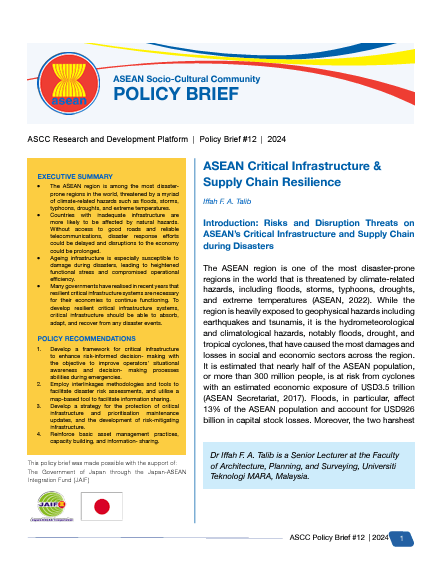

EXECUTIVE SUMMARY
- The ASEAN region is among the most disaster-prone regions in the world, threatened by a myriad of climate-related hazards such as floods, storms, typhoons, droughts, and extreme temperatures.
- Countries with inadequate infrastructure are more likely to be affected by natural hazards. Without access to good roads and reliable telecommunications, disaster response efforts could be delayed and disruptions to the economy could be prolonged.
- Ageing infrastructure is especially susceptible to damage during disasters, leading to heightened functional stress and compromised operational efficiency.
- Many governments have realised in recent years that resilient critical infrastructure systems are necessary for their economies to continue functioning. To develop resilient critical infrastructure systems, critical infrastructure should be able to absorb, adapt, and recover from any disaster events.
POLICY RECOMMENDATIONS
- Develop a framework for critical infrastructure to enhance risk-informed decision- making with the objective to improve operators’ situational awareness and decision- making processes abilities during emergencies.
- Employ interlinkages methodologies and tools to facilitate disaster risk assessments, and utilise a map-based tool to facilitate information sharing.
- Develop a strategy for the protection of critical infrastructure and prioritisation maintenance updates, and the development of risk-mitigating infrastructure.
- Reinforce basic asset management practices, capacity building, and information- sharing.
Share







